Brits breaking quarantine face 10 years jail, Australian WHO scientist: claims ‘COVID came from China’
British travellers are facing strict new quarantine laws, while an Australian scientist has challenged China’s COVID-19 narrative.
News
Don't miss out on the headlines from News. Followed categories will be added to My News.
People arriving in England from COVID-19 hotspots could face ten years in prison if they fail to meet tough new regulations.
The UK Government announced the increased measures earlier this week, saying travellers who knowingly lied about their travel history or failed to quarantine correctly could face fines of up to AU$17,915 and up to ten years in prison.
“If people fail to abide by the rules and inaccurately or purposely didn’t fill in the relevant documentation properly, they will be charged under the Forgery Act, which includes forging, or lying on, forms,” British health secretary Matt Hancock said.
In a move similar to Australia’s program, returning travellers from 33 high-risk countries will now be required to enter hotel quarantine for 10 days and be subject to an “enhanced testing” regime.

“People will need to remain in their rooms and of course will not be allowed to mix with other guests and there will be visible security in place to ensure compliance alongside necessary support, so even as we protect public health we can look after the people in our care. People who flout these rules are putting us all at risk,” Mr Hancock said.
“Passenger carriers will have a duty in law to make sure that passengers have signed up for these new arrangements before they travel, and will be fined if they don’t, and we will be putting in place tough fines for people who don’t comply,” Hancock said.
COVID ORIGINS ‘IN CHINA’
COVID-19 originated in China despite official findings being inconclusive, according to an Australian scientist.
NSW Health microbiologist and infectious diseases expert Professor Dominic Dwyer, who was the only Australian to take part in the World Health Organisation’s investigation into the origins of the virus, is now quarantining in Sydney after joining a 14-man team of WHO experts to investigate the source of the pandemic.
A two-week investigation in Wuhan failed to officially confirm COVID-19’s source but Prof Dwyer said he believed the virus had started there.
“I think it started in China,” Professor Dwyer said.
“I think the evidence for it starting elsewhere in the world is actually very limited. There is some evidence but it’s not really very good,” Prof O’Dwyer told Nine.
Prof Dwyer and a team of virologists, epidemiologists, veterinarian and food safety specialists visited critical sites related to the outbreak like the Huanan Seafood Market, the Wuhan Institute of Virology, the Hubei Province Centre for Disease Control and the Prevention and the Hubei Provincial Hospital.
He said bats were the “most likely source” of covid before another animal gave it to humans, but also said the virus had been active for “weeks” before the initial wet market outbreak in December 2019.
“I think the explosion in the market in Wuhan was really an amplifying event,” Prof Dwyer said.
“The virus had probably been circulating [in the community] for some good few weeks beforehand.”
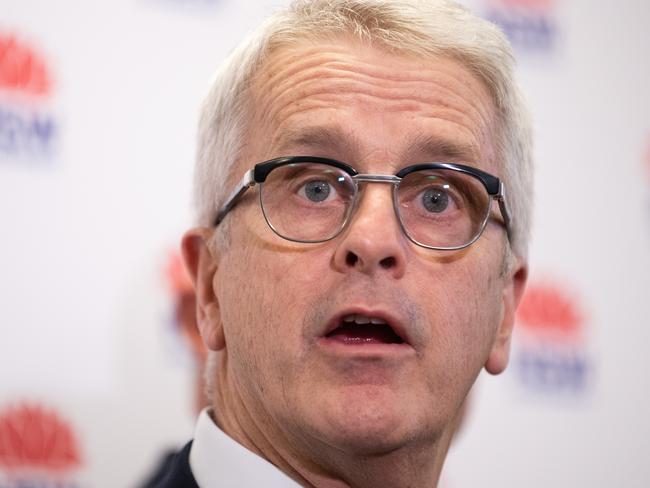
ASTRAZENECA JAB OK FOR OVER-65s
It comes WHO experts announced that the AstraZeneca-Oxford COVID-19 vaccine can be used for people aged over 65, and also where coronavirus variants of concern are circulating, soothing fears about the jab.
The World Health Organisation’s 15-member Strategic Advisory Group of Experts on Immunisation (SAGE) issued interim recommendations for when and how to use the two-shot vaccine, which has yet to receive WHO emergency use authorisation.
The announcement came after the vaccine suffered several setbacks, raising questions about whether it was appropriate to use it on older people, or in places where a variant of the virus first found in South Africa is circulating.
SAGE chief Alejandro Cravioto acknowledged the lack of data on the vaccine’s efficacy for people aged over 65, which has prompted a number of countries to withhold recommending its use in older people — who are by far the most vulnerable to the virus.
But, he told journalists, “we feel that the response of this group cannot be any different from groups of a younger age”.
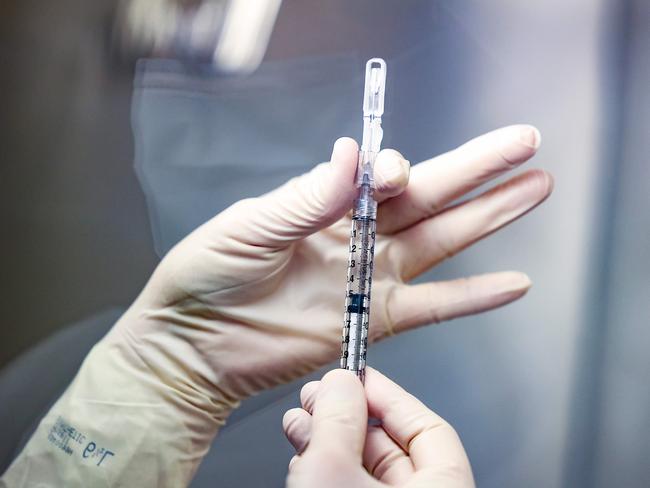
SAGE, he said, recommends “for the vaccine to be used for 18 years and above without an upper age limit”.
He said the experts were eagerly awaiting more specific data on the efficacy of the vaccine in people over 65, but said it “would not be appropriate” to wait with its recommendations.
“We have thousands of people dying,” he stressed.
“Anything we can do to use a product that might reduce that is totally justified, even if the information is not as complete as we would like.”
EFFECTIVENESS AGAINST VARIANTS
The experts also said they had discussed the effectiveness of the vaccine when faced with a range of new virus variants of concern, and in particular the one first spotted in South Africa.
The country has decided to put off using AstraZeneca jabs in a planned vaccination program over concerns about their efficacy against the variant.
Alarm was raised when a South African study concluded the AstraZeneca vaccine provided only “minimal” protection against mild to moderate COVID-19 caused by the variant.
But the WHO urged caution, pointing to the small size and possibly problematic methodology of the study, insisting more data was needed.
And SAGE said on Wednesday the vaccine could also be used in places where “variants are present”.
Mr Cravioto stressed that “there is no reason not to recommend its use even in the countries that have the circulation of the variants”.
The experts also said the vaccine proved more effective when the interval between the doses was extended to between eight and 12 weeks.
They also reiterated their recommendation not to prioritise international travellers for vaccination.
SAGE, which advises the WHO on overall global vaccine policies and strategies, has already issued advice on the usage of the Pfizer-BioNTech and the Moderna vaccines.
AstraZeneca’s vaccine is currently a vital part of Covax, the system set up by WHO and others to procure COVID-19 jabs and ensure their equitable distribution around the world.
It accounts for almost all of the 337.2 million vaccine doses Covax is preparing to begin shipping to some 145 countries during the first half of the year, once it receives WHO authorisation.
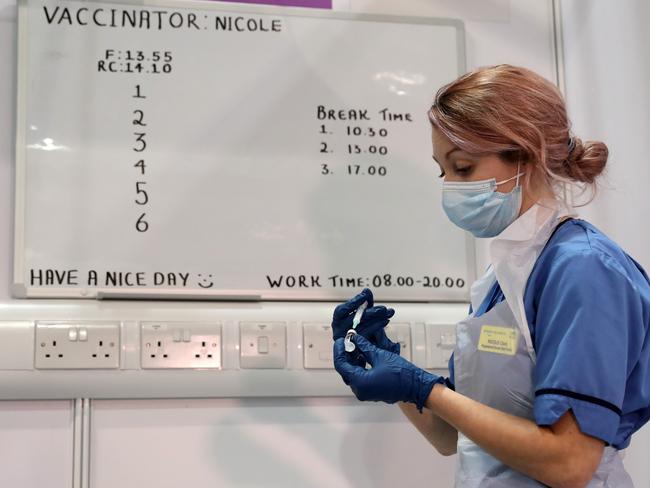
Andrew Pollard, from Oxford University’s Vaccine Group, said: “The new guidance from WHO is an important milestone in extending access to the Oxford-AZ vaccine to all corners of the world.” The WHO is set to decide next week on whether to give the AstraZeneca vaccine emergency use authorisation for doses produced in India and South Korea.
If granted, those doses could start to be distributed to some of the world’s poorest countries via Covax.
So far, the WHO has only given emergency use listing to the Pfizer jab, though several other manufacturers have started the evaluation process.
ASTRAZENECA PLANS HIGHER VACCINE OUTPUT FOR EU
Meanwhile, AstraZeneca plans to accelerate production of its COVID vaccine in the second quarter to support EU needs, the British pharmaceutical giant said on Wednesday (local time), announcing a deal with Germany’s IDT Biologika.
The announcement follows controversy over deliveries of the AstraZeneca-Oxford University jab to the European Union, which had caused tensions between the bloc and the pharmaceutical company.
Ahead of the EU’s vaccine approval, AstraZeneca sparked fury among European leaders by announcing that it would miss its target of supplying the EU with 400 million doses, due to a shortfall at the firm’s European plants.
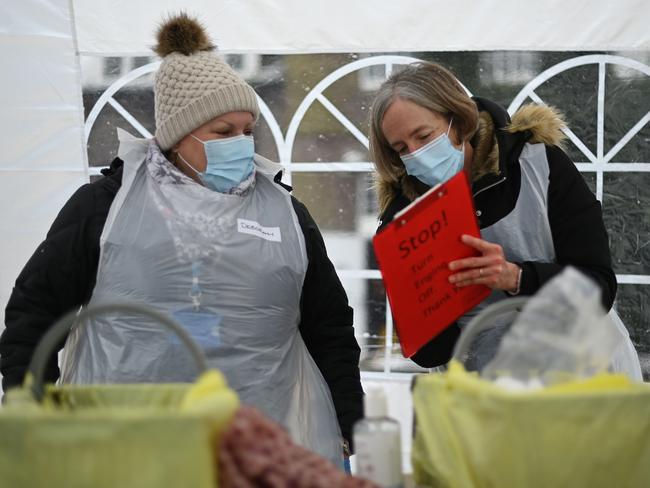
While the UK government has vaccinated millions of Britons with the AstraZeneca vaccine since late last year, the company began shipping its jab to the EU only on Friday after the bloc’s drug regulator took its time over recommending its use.
“Following the European Medicines Agency approval, millions of AstraZeneca vaccines began shipping on 5 February as part of the initial 17 million doses that are due to be delivered over the next weeks, with more planned in March,” AstraZeneca said in the statement outlining plans to step up production.
“AstraZeneca and IDT Biologika are exploring options to accelerate output of finished COVID-19 vaccine AstraZeneca in the second quarter of 2021 in order to help support Europe’s immediate vaccination needs during the pandemic,” the statement added.
The company’s chief executive Pascal Soriot said the agreement “will greatly help Europe build an independent vaccine manufacturing capability that will allow it to meet the challenges of the current pandemic and create strategic supply capacity for the future”.
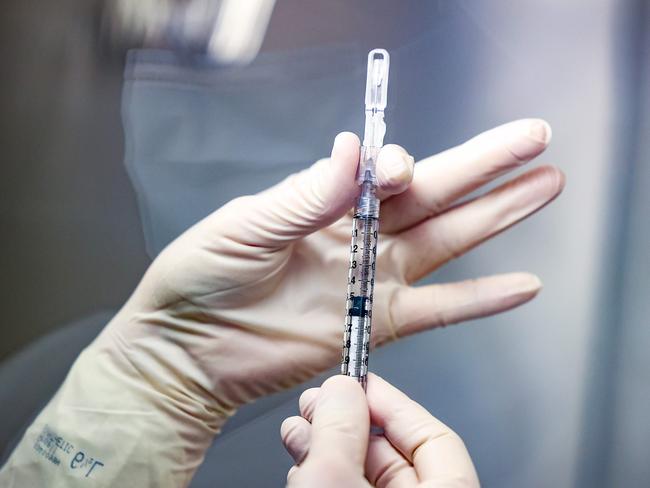
He thanked the German government and European Commission for “their support”. Beyond the immediate need for more vaccines, the agreement will see both companies invest to increase capacity at a production site in Dessau, eastern Germany, to produce millions of doses monthly by the end of 2022.
The deal could allow also for the manufacturing of coronavirus vaccines produced by other pharmaceutical companies.
The plans will give IDT Biologika some of the largest vaccine manufacturing capacities in Europe, the statement said.
“We are proud that AstraZeneca has chosen us as a strategic partner for the manufacturing of their vaccines,” said IDT Biologika chief executive Jurgen Betzing, adding that it was “a great day for Germany and Europe”.
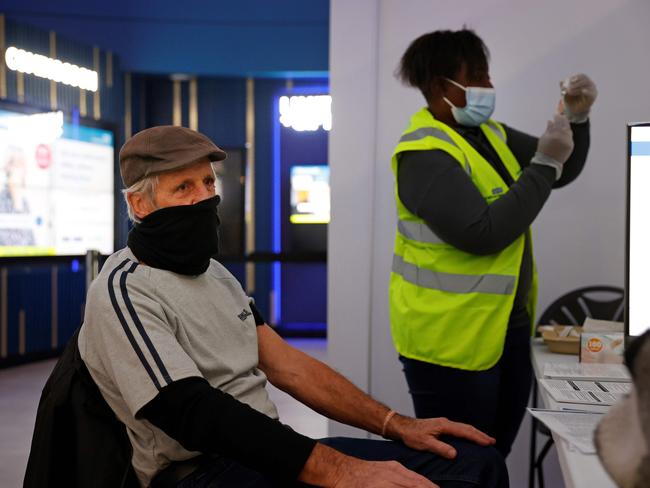
The AstraZeneca vaccine has garnered praise for its low cost relative to rivals and the ease of storage. A regular refrigerator can be used to store the vaccine.
But it has suffered a number of setbacks in recent weeks.
The jab was temporarily excluded from South Africa’s immunisation campaign over questions about its effectiveness against a new strain of the disease first identified in the country.
There have also been concerns in some parts of Europe over using the AstraZeneca vaccine on the elderly, but WHO’s approval of the jab on Wednesday (local time) eased concerns.
‘VARIANT OF CONCERN’: UK’S DEADLY NEW COVID STRAIN
A testing blitz was launched in Britain after two mutant coronavirus strains merged, with health officials calling the new strain a “variant of concern”.
The new mutation, a mixture of the South African variant, which is harder to stop with vaccines and the UK strain, which is up to 70 per cent more transmissible, has been found in Bristol.
It comes as Britain introduced an Australian-style hotel quarantine system for people travelling from 33 red list countries to slow the spread of new variants.
Connecting flights for some of those countries will still come into the UK but those who lie about where they were coming from face up to 10 years’ jail.

The drastic penalty underlined the concern that UK authorities have about new strains, as Oxford University prepares to tweak its jab for distribution later this year.
Professor Andrew Pollard, who is leading the team on the Oxford/AstraZeneca vaccine which Australia has ordered, has defended the vaccine’s efficacy.
He said it would cut transmission significantly, and those that did get ill would only have “the sniffles.”
Bristol, about two hours west of London, was undergoing surge testing of residents, while Liverpool was also on alert for a new variant.
The Liverpool variant was a mixture of the South African strain and the original coronavirus strain.
Authorities were also begging people in south London to come forward for testing as the UK battles new strains.
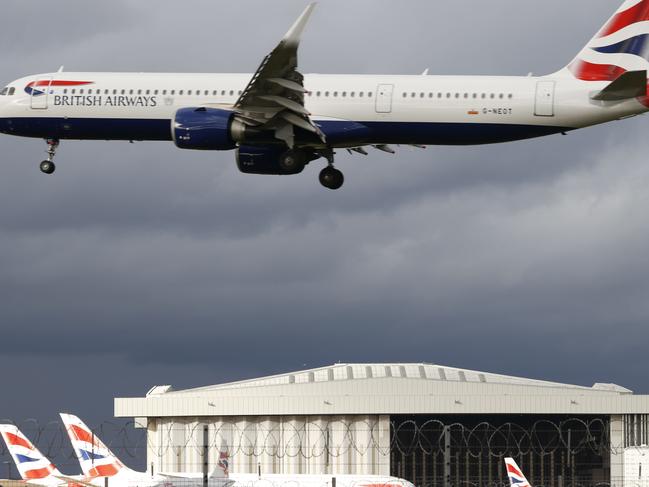
And a cluster in Manchester was also being monitored.
Britain’s New and Emerging Respiratory Virus Threats Advisory Group (NERVTAG) have classed the variant first identified in Bristol – the Kent variant with the South African E484K mutation – as a “variant of concern”.
Public Health England has identified 76 cases of the Bristol and Liverpool variants.
Health officials said they have “a high degree of confidence that the vaccines will work against variants”.
However, there have been concerns that while vaccines would stop dying or getting seriously ill from the South African strain, they would not stop mild infections.
Dr Susan Hopkins, from Public Health England, said the South African variant was under control in Britain so far.
“To date we have identified 170 cases and 18 of these are unlinked to travel, and that means that they neither travelled abroad themselves or a direct contact with an individual that has travelled,” she said.
The concerns about the new variants comes as another 1,052 people died in the UK on Tuesday’s figures, bringing the total to 113,850.
Cases dropped again in Britain, with 12,364 recorded on Tuesday local time, however there have been almost 4 million reported infections since the pandemic began.
Prof Pollard told the UK parliament on Tuesday that the world would need to be vaccinated for the virus to stop spreading.
“As we move to a point where more people are immunised around the world, or have natural infection, the virus will only survive if it is able to make new versions of itself that can still spread … despite that immunity,” he said.
“I think we have to come to terms with the fact that that is going to be the future.
“In the trials in those regions where new variants are emerging, we are not seeing a sudden shift where lots of people who are vaccinated are ending up in hospital. They are still being protected from hospitalisation.
“If people have just got the sniffles, then I think our job is done.”
‘CHINA-CENTRIC BIAS’
Fury is growing as the World Health Organisation was accused of a “whitewash” as it found the coronavirus likely didn’t originate at the Wuhan wet market or come from a lab leak.
Both suggestions that the virus could have originally crossed to humans at the Huanan Seafood Market, or escaped from the Wuhan Institute of Virology (WIV) were thrown out in a lengthy joint press conference.
WHO’s findings appeared to largely back China’s protestations that the virus may have originated from outside of its borders and its repeated denials of a lab accident.
It is a move which will only fuel allegations of “China-centric” bias by WHO which have been fiercely lobbied by the US.
And despite offering further explanations, the WHO team admitted they have failed to identify the original source of the COVID-19 outbreak.

Australian Nationals Senator Matt Canavan said China had acted like it had “something to hide” and dragged out the inquiry.
Speaking on Nine’s Today, Senator Canavan said he was not surprised that it was hard to find the origins a year after the pandemic began.
“We needed this inquiry to start pretty much straightaway if there was any hope of finding conclusions and it hasn’t,” he said.
“Through this whole process, China’s acted like it had something to hide and it has frustrated the inquiry, dragged it out.”
Senator Canavan said the world would benefit from knowing where the virus came from so it could be prevented.
But he wasn’t confident that would happen.
“We will probably never know because China has not been fully transparent with the world,” he said.
Federal Health Minister Greg Hunt told Sky that it was “not surprising that there are no surprises” in the WHO report.
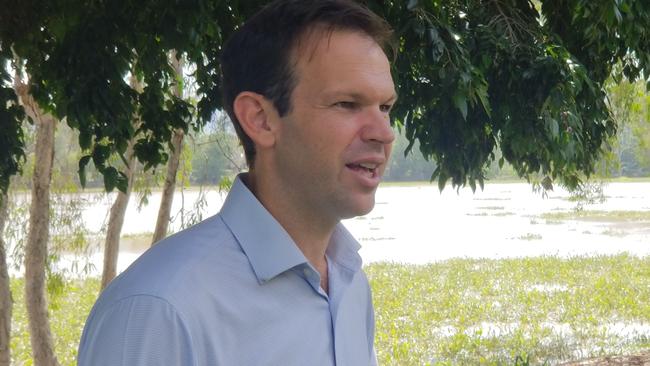
Former US Secretary of State Mike Pompeo told Fox News he didn’t believe the WHO team was given the “access that they needed” to do a thorough investigation.
He said Chinese scientists and doctors may not have been able to speak freely with WHO investigators.
Mr Pompeo also claimed that there remained “significant evidence that (COVID-19) came from that laboratory”.
Asked whether his mind had been changed over the alleged lab origins of the virus, Mr Pompeo said, “Not a thing.”
“This is a complete whitewash,” added British MP Tobias Ellwood.
“Given the global economic devastation and death toll this pandemic has caused – never again should a country responsible for an outbreak be allowed to hinder an international investigation for a full 12 months.”

China’s government has long been accused of covering up the pandemic’s origins – and has been continuing to attempt to deflect blame.
WHO scientists appeared alongside their Chinese counterparts as they cast doubt on the Wuhan wet market as the original source and dismissed the lab leak as “extremely unlikely”.
Dr Peter Ben Embarek, the head of the WHO mission, said: “The laboratory incident hypothesis is extremely unlikely to explain the introduction of the virus into the human population.
“Therefore is not in the hypotheses that we will suggest for future studies.”
Instead the team offered speculative explanations including a possible jump from animals to humans elsewhere, or even that it may have come across borders on frozen food.
WHO concluded the virus likely jumped to humans from an animal – but now the question is to where this occurred as doubt was cast over the wet market as the source of the original transmission.

TRANSMISSION FROM BATS ‘UNLIKELY’
The team also admitted the virus could have been circulating in other regions of China “several weeks” before it was identified after an outbreak at the wet market in Wuhan.
Experts believe the disease — which has killed more than 2.3 million people worldwide — originated in bats and could have been transmitted to humans via another mammal.
Dr Embarek said identifying the animal pathway remains a “work in progress”, and the absence of bats in the Wuhan area dimmed the likelihood of direct transmission.
The team handed down their findings at a press conference in Wuhan, after a month of meetings and site visits in the Chinese city where the virus was first identified.
Dr Embarek said that while bats had a “natural reservoir” for coronavirus, it is unlikely that they were in Wuhan.
It was “most likely” to have come from an intermediary species, he said. He also backed up China’s position that there was no evidence of “large outbreaks” in Wuhan before December when the first official cases were recorded.
Animals such as rabbits, ferrets and bamboo rats could be the intermediary, another team member Marion Koopmans added, saying they might be an “entry point” for further investigations.
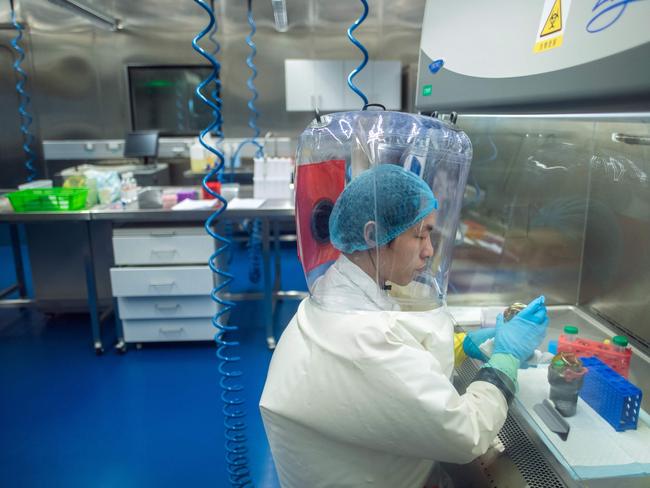
“Therefore we have tried to find what other animals were introduced that could have introduced the virus,” he said.
“The market was dealing primarily with frozen animal products and mainly seafood but there were also vendors selling products from domesticated wildlife and imported products.
“There is the potential to continue to follow this lead and animals that were supplied to the market in frozen and other semi-processed or raw form.”
The report followed a month of meetings and site visits in Wuhan, with team members visiting key sites including the Huanan wet market and the Wuhan Institute of Virology.
Liang Wannian, head of the China side of the joint mission, said animal transmission remained the likely route, but “the reservoir hosts remain to be identified”.
Dr Embarek quashed the theory that a leak from a virology lab in Wuhan could have caused the pandemic.
“The laboratory incident hypothesis is extremely unlikely,” he said. It “is not in the hypotheses that we will suggest for future studies”.
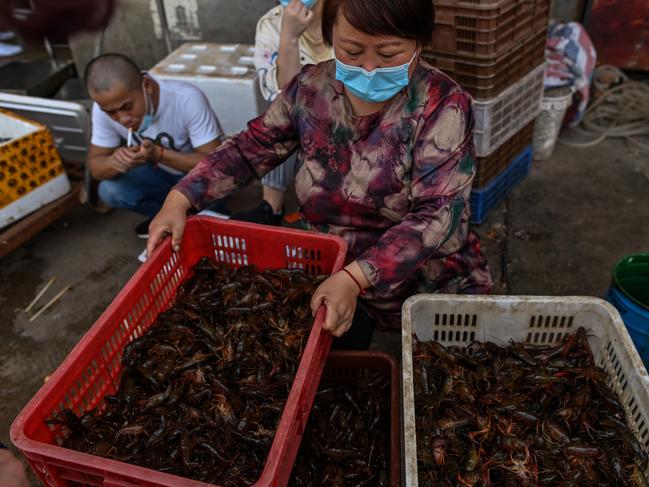
The mission was a diplomatically knotty one — presaged by fears of a whitewash — with the US demanding a “robust” probe and China firing back with a warning not to “politicise” the investigation.
The WHO experts spent a month in China including two weeks in quarantine. Liang said studies showed the virus could be “carried long-distance on cold chain products”, appearing to nudge towards the theory the virus was imported — an idea that has abounded in China in recent months.
Dr Embarek said “the virus can persist and survive in conditions that are found in these cold and frozen environments”.
“But we don’t really understand if the virus can then transmit to humans and under which conditions this could happen,” he said.
Beijing is desperate to defang criticism of its handling of the chaotic early stages of the outbreak.
It has tried to refocus attention on its handling and recovery while floating the theory that the virus emerged abroad and was brought into China possibly via frozen foods.
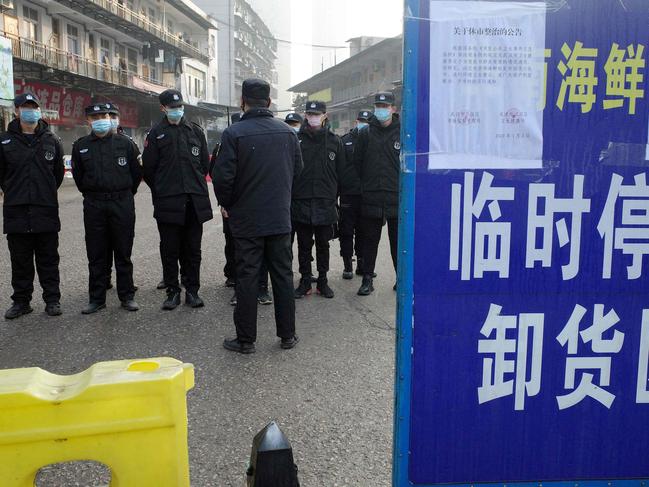
Dr Koopmans said the next steps could include searching for “earlier circulation” of the virus.
Reporters were largely kept at arms’ length from the experts during their closely-monitored visit, but snippets of their findings crept out via Twitter and interviews.
Questions have been asked about the relevance of some of their activities to their stated aim of finding the virus source — including a visit to a propaganda exhibition celebrating China’s recovery from the pandemic.
The group spent just an hour at the seafood market where many of the first reported clusters of infections emerged over a year ago.
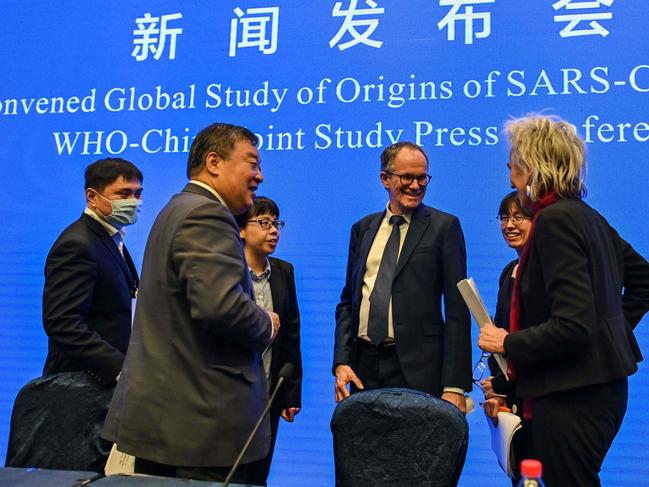
They also appeared to spend several days inside their hotel, receiving visits from various Chinese officials without venturing out into the city.
Research was carried out at the Wuhan virology institute where they spent nearly four hours. They met with Chinese scientists there including Shi Zhengli, one of China’s leading experts on bat coronaviruses and a deputy director of the Wuhan lab.
Scientists at the laboratory conduct research on some of the world’s most dangerous diseases, including strains of bat coronaviruses similar to COVID-19.
Former US president Donald Trump frequently repeated a controversial theory that a lab leak may have been the source of the pandemic.
WHO BACKS ASTRAZENECA SHOT
Meanwhile, Iran began its vaccination campaign against COVID-19 on Tuesday (local time) to fight the Middle East’s deadliest outbreak of the illness.
It will initially use Russia’s Sputnik V shots, with 4.2 million doses of the AstraZeneca-Oxford vaccines also expected under the Covax mechanism, which intends to ensure procurement and equitable international distribution of jabs.

The AstraZeneca vaccine makes up the bulk of initial Covax deliveries to some 145 countries — mostly in poorer parts of the world — but it suffered a setback in recent days with a trial showing it only offers minimal protection against the coronavirus variant first detected in South Africa.
The results forced South Africa to delay the start of its vaccination campaign, but WHO insisted that the AstraZeneca shot remained vital to the global fight against COVID-19.
Richard Hatchett, head of the Coalition for Epidemic Preparedness Innovations (CEPI), said it was “vastly too early to be dismissing this vaccine”.
“It is absolutely crucial to use the tools that we have as effectively as we possibly can,” he said at a WHO press briefing.
AstraZeneca has stood by its vaccine, and said researchers are working on an updated version that can be effective against the new variants. WHO authorisation for the shot is expected next week.
Despite the vaccine rollouts, the virus remains on the march with more than 106 million known infections worldwide.
The most vulnerable have been forced to take the risk of catching COVID-19 by going out to work and make ends meet.

“They tell us not to go out. But what are we going to eat?” said Gerardo Acevedo, who has a stall selling socks in downtown Mexico City.
The economic devastation is near-universal, including in the United States, the world’s biggest economy and the nation worst-hit by the virus.
New President Joe Biden is aiming to ramp up vaccinations, saying his administration hopes to have enough vaccines for 300 million people before the summer.
Among Mr Biden’s key aims is to ensure the safe reopening of schools, with experts and parents warning of a mental health crisis among children who have been away from classrooms for months.

“It makes me feel lonely because I’m just sitting down here in the basement all by myself, all day, pretty much almost every day,” said Daniel Mooney, an eight-year-old from Virginia.
“And there’s really nothing I can do about it. The only thing I can really do is say that I really, really want to be back in school.”
It comes as New York City has now given more than one million vaccine doses, Mayor Bill de Blasio said on Tuesday (local time).
Hizzoner said there have been 1,032,158 COVID-19 shots administered to date — a figure he had hoped to reach last month. Of that amount, 716,492 were first doses and 222,763 were second shots of the two-shot regimen.
Mr de Blasio blamed drug manufacturers in part for the lag in local immunisations, saying at a press conference, “We need to see the pharmaceutical companies set up in a way they are not right now,” noting there are only two immunisations currently available.
The rolling seven-day average of the city’s coronavirus positive-test rate is 8.09 per cent, Mr de Blasio added.
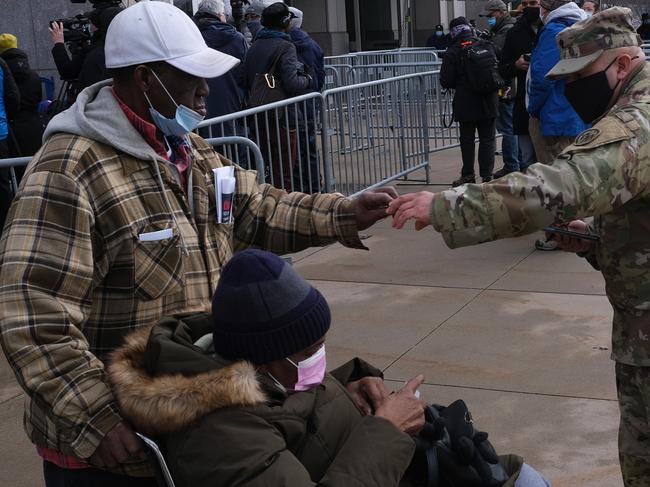
VACCINE DOSES HEADED FOR AUSTRALIA
It comes as millions of doses of Pfizer’s coronavirus vaccine will be allowed to leave Europe for Australia.
There were fears new export rules on COVID-19 vaccines made in Europe would block the first shipment of 80,000 Pfizer doses to Australia.
But the EU’s ambassador to Australia Dr Michael Pulch today said the first doses of the vaccine scheduled to arrive in Australia at the end of this month will not be stopped.
“Australia can indeed rely on deliveries from Europe,” he told the ABC.
“My colleagues in Brussels have assured the Australian side that they will work with them on a smooth authorisation process.
Dr Pulch said the new rules were simply to increase “transparency” after several pharmaceuticals told the EU they would have to reduce delivery of vaccines to Europe.
“We felt that we needed to get a grip on the situation’” he said.
“We had … Pfizer-BioNTech … and AstraZeneca, who out of the blue announced they would only deliver 40 per cent of what they had promised.
“So we felt we had to put down a marker here and develop some guardrails if you wish for co-operation with these companies.”
– with Jade Gailberger, Nadia Salemme, Tamsin Rose, Nathan Vass
Originally published as Brits breaking quarantine face 10 years jail, Australian WHO scientist: claims ‘COVID came from China’




